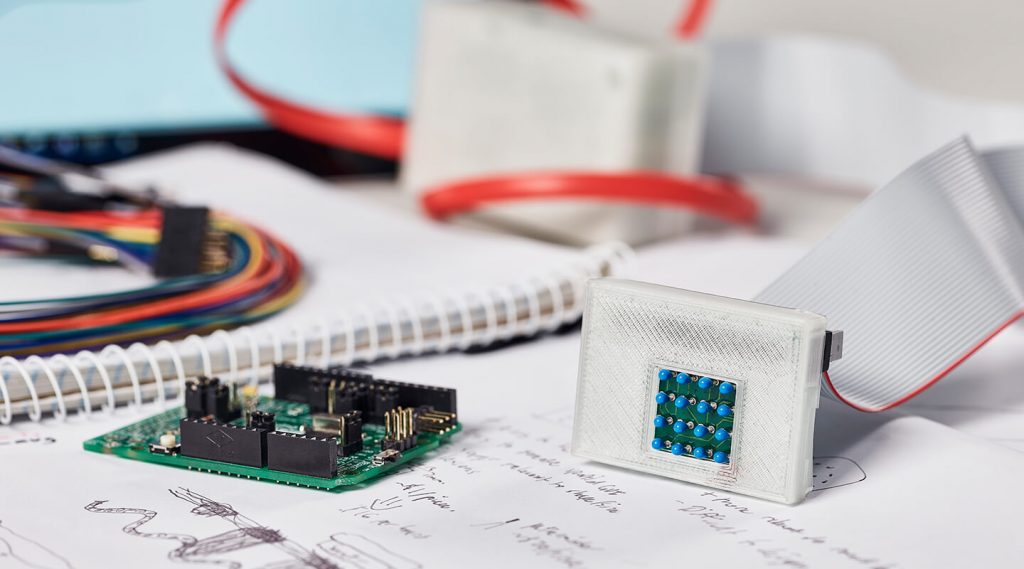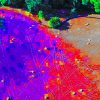Canadian engineering grads improve skin cancer detection with award-winning sensor device
A student project out of Ontario is making waves internationally for its potential to improve skin cancer tests
A group of four electrical biomedical engineering graduates from McMaster University were recently awarded the James Dyson Award for their skin cancer detection device called the sKan.
Michael Takla, Rotimi Fadiya, Prateek Mathur, and Shivad Bhavsar took home $50,000, beating out thousands of applicants worldwide. Using thermal imaging, the sKan provides doctors and their patients with more accurate and consistent skin cancer test results.

The group was starting their fourth year of undergrad in the electrical biomedical engineering program when they stumbled across some research that caught their attention.
It read something like this: cancerous skin warms more quickly after being cooled than non-cancerous skin.
“The physiological phenomenon that we’re using isn’t actually that new. [Scientists] have known for a while now that skin cancer has slightly more elevated temperatures compared to the normal tissue around it,” says Fadiya.
What stuck out for them was the difference in recovery speed when applying a cold object or substance before testing and the level of consistency in the results.
“We thought, is there an opportunity here to take this research beyond what’s been done and put this into a device that can be used in a clinical setting?” says Fadiya.
Melanoma is the deadliest form of skin cancer and one of the fastest rising of all cancers in Canada. According to the Canadian Cancer Society, in 2017 around 7,200 Canadians were diagnosed with the disease.
As it stands today, skin cancer is first detected with the human eye. A dermatologist or family doctor will examine the body for any unusual moles or lesions. Sometimes, a dermoscopy will be used to see the size, shape, and colour of moles more closely. If an abnormality is found, the area (or part of it) will be removed and sent for testing. There are three different types of skin biopsies: excisional, punch, and shave.

The problem is that step one of detection process – the physical scan – can be both inaccurate and subjective based on who’s doing the test. An initial error in diagnosis can lead to serious health consequences later on.
This is where the sKan comes in. While still in prototype phase, this handheld detection device seeks to eliminate any uncertainty. During temperature recovery, the tool creates a thermographic image over the affected area of the skin using 16 thermistors – low cost, high temperature sensitivity resistors.
Right now, the group is trying to sync up the calibration curves with the different thermistors to ensure hyper-accurate results. This will bring them one step closer to making it accessible to the public.
The team travelled to the U.K. in late October of last year to meet with James Dyson himself and accept their award.

“He’s one of those people you would never have guessed you’d have an opportunity to see in person. He’s incredibly intelligent and funny as well,” says Fadiya. “He said he’d buy one!”
As for what they’ll do with the money?
“The money is going to be put towards basically getting us through our next design iterations and prototypes. We’re working towards doing a preliminary clinical study in about 9 months or so. So between now and then it’s about making sure we’ve worked out any of the kinks.”
A responsible choice for four already successful entrepreneurs just starting out in their careers. They’re the second Canadian team to win the award and judging by the previous group’s achievements since 2015, you can expect to see more of this year’s winners in the future.
Check out Teledyne DALSA‘s ‘Choosing a Sensor for Machine Vision’ whitepaper:
http://info.teledynedalsa.com/acton/ppform/14932/0017/f-0496



 BRAIN Research: They Wish It Was Only Rocket Science
BRAIN Research: They Wish It Was Only Rocket Science  The Long Wavelength Infrared (LWIR) camera market heats up
The Long Wavelength Infrared (LWIR) camera market heats up 